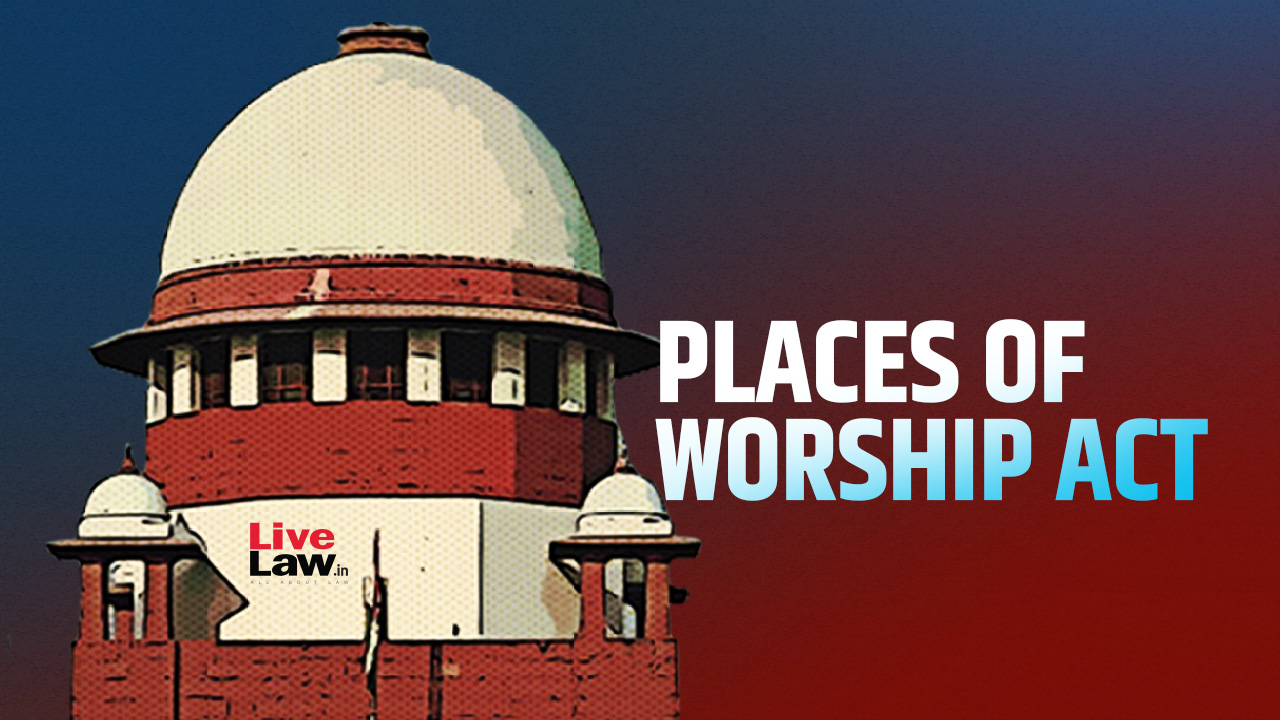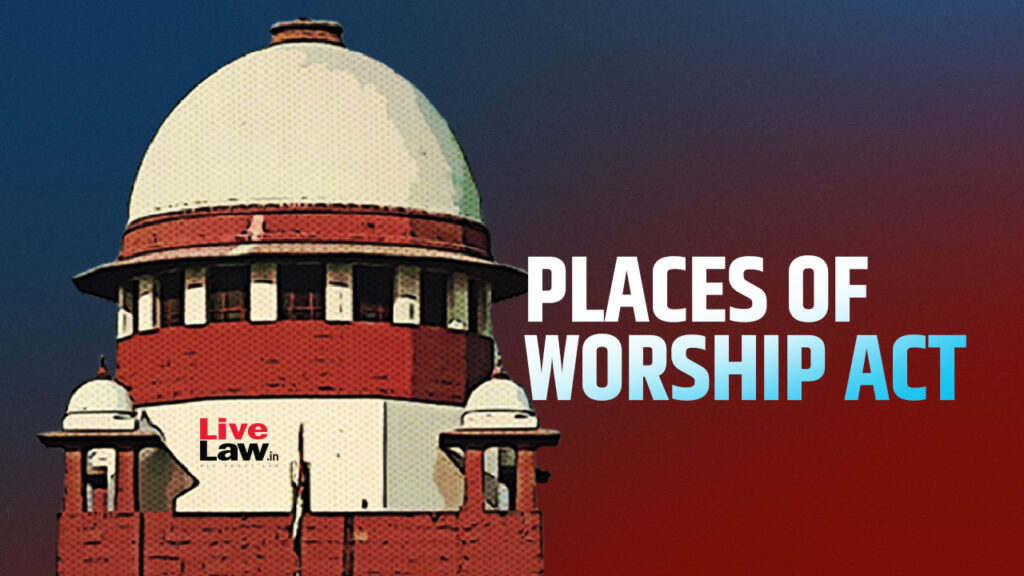

By Dr. Gyan Pathak
Halt all fresh suits, proceedings, and orders in relation to the Places of Worship (Special Provisions) Act 1991, ordered a three-judge bench of the Supreme Court of India on December 12, implications of which will be far reaching since it would transcend beyond the legal boundaries to the social and political life of the people of the country. The order has kindled a new hope of survival of secularism in its battle with communalism being attacked socially, politically, and legally by the Hindutva forces, though the Places of Worship Act has a bar against raising such issues.
Altogether 18 cases filed by the Hindutva forces claiming as many as 10 Mosques or Dargahs were pending in various courts across the country, despite the Ayodhya Verdict of 2019 had upheld the Places of Worship Act with the ultimate objective of not allowing the incidents of the distant past in the history going back to the 16th Century AD any destruction of the present and future of the people now.
An oversight of the real objective of the Places of Worship Act by a former CJI D Y Chandrachud in 2022 paved the way for mushrooming growth of cases against the Mosques and Dargahs, because he said that there was no bar on ascertaining the nature of places of worship under the said Act, though it bars changing their character with a cut-off date of August 15, 1947, when India became independent. In the current order, CJI Sanjiv Khanna led three-member bench has corrected the error.
Though the Places of Worship Act was upheld by the five-judge bench of the Supreme Court of India in the Ayodhya Verdict, its constitutional validity was challenged in the Supreme Court in 2020 and afterwards. Supreme Court had issued notice to the Union Government and asked to file their reply, but even after four years reply of the Centre was not submitted, and the case remained pending. In the meantime, various parts of the country continued undergoing social and political tensions causing loss of lives and properties, with rising number of cases in courts too. It was only recently, after 5 deaths in Sambhal in Uttar Pradesh, fresh requests were made before the Supreme Court bench to expedite hearing. Now the Supreme Court of India has given the Centre four weeks to reply and submit its counter-affidavit in the case.
The intention of the Union Government was clear when Solicitor-General Tushar Mehta said that third parties cannot seek stay of civil suit proceedings. Obviously, the Centre loved the mushrooming growth of cases by Hindutva forces making claim over Mosques and Dargahs. Senior Advocate Vijay Hansaria even argued that civil suits cannot be stayed while entertaining writ petitions concerning the Places of Worship Act.
Chief Justice Khanna responded to the objection and said, “These writ petitions had brought up the matter of the civil suits. Notice was already issued in these petitions. Secondly, other writ petitions have raised the issue of enforcing the 1991 Act against these civil suits. They have called for injunction.”
Since the ruling establishment at the Centre have been pursuing the Hindutva agenda, the halt order of the Supreme Court is significant, especially given Centre’s attitude in this matter that has been exposed in the court.
What is lying ahead is a matter of imagination. When the senior advocate Vikas Shing sought a reference to a five-judge bench, Chief Justice Khanna said that the court would consider this case in the light of the five-judge bench which delivered the Ayodhya Verdict of November 2019. Ayodhya verdict had not only upheld the Places of Worship Act but had also observed that “for any person who seeks solace or recourse against the actions of any number of ancient rulers, the law is not the answer”.
Further, Justice Vishwanathan said that section 3 of the Places of Worship Act was an “effective manifestation of a reiteration of Constitutional principles”, adding that the Act embodied the idea of secularism, dignity, fraternity, and freedom of religion. He said that the suits could also be objected on the ground of violation of these basic Constitutional principles, even in the absence of the 1991 Places of Worship Act.
The freeze order that bars courts registering fresh suits or passing orders in pending cases seeking to “reclaim” Hindu temples destroyed by Mughal “invaders” in the 16th century was passed amidst interruptions by the petitioners representing Hindutva forces is also significant. The order will remain in force until the bench hear the petitions challenging the validity of the Places of Worship Act. The next hearing in the case is scheduled for February 17.
The order has preserved the integrity of the Places of Worship Act, that has been in place for over three decades but was not enforced on the ground. The order has both immediate and long-term significance in preventing legal volatility and social unrest, since the Act was effectively put in place to avoid further disputes over religious sites that could escalate communal tensions affecting social and political life of the country.
The Supreme Court bench led by CJI Khanna also aims to provide stability in legal interpretations relating to religious site ownership and status. It would certainly prevent reigniting communal tensions that impacts both society and politics of the country is very disastrous way.
By the halting order, the Supreme Court bench, comprised of CJI Sanjiv Khanna, Justice P V Sanjay Kumar, and Justice K V Vishwanathan, has not only protected the Places of Worship Act but the ‘basic structure’ of the Constitution of India which stands on secularism.
Centre is given a time to reply in four weeks, which they have been avoiding for the last four years. The order has put the ruling establishment at the Centre led by Hindutva forces in a difficult situation – either to support the Places of Worship Act or to argue against it.
At this point of time, Supreme Court order has just given a little hope to secularism to survive the onslaught of communalism in India, but there is a long social, political, and legal battle ahead. (IPA Service)




